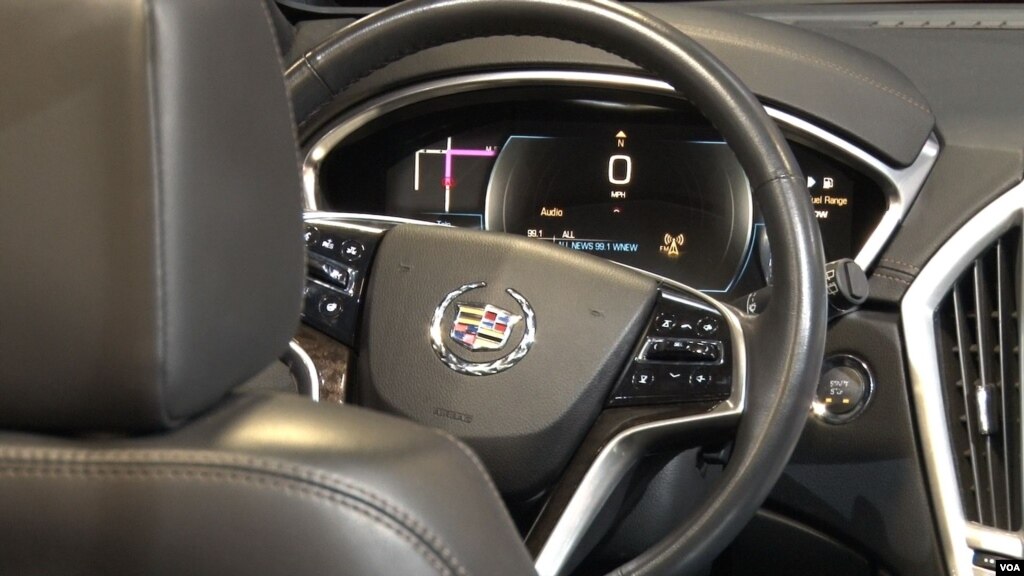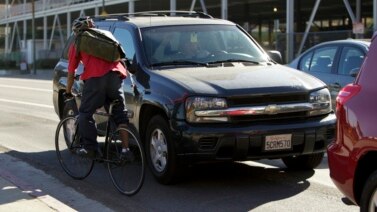
Modern automobiles and their drivers are becoming connected through wireless technology to entertainment and information systems. VOA recently visited the Los Angeles Auto Show. We found that high-priced, luxury cars, like BMW, are attempting to become friendly to the environment.
This car, an electric i3 model, is made with lightweight carbon fiber. It also has the latest electronic devices to make driving safer.
The i3 includes a camera that lets the driver see the area directly behind the car. It is equipped with automated parking assistance and collision avoidance systems.
Theresa Moriarty works for BMW. She says the i3 is equipped with automatic braking. Stopping or slowing down the car adds power to its battery.
“Any time you’re not accelerating, the regenerative braking kicks on and the car will slow, adding some energy back to your battery.”
“Blue tooth is connecting.”
Another auto-maker -- General Motors -- has developed a high-tech system for a hybrid version of its Cadillac model. Power for the car comes from gasoline, a traditional fuel, and electricity.

Stuart Fowle works for General Motors. He says the high-tech system lets the driver start the car from a distance. It also lets the driver see how the vehicle is operating from halfway around the world.
“(The) smart phone app we have allows you to check your tire pressures, check your oil level or your, your oil life. It allows you to check your fuel level, how much range you have on that tank of fuel.”
For operators of many vehicles, technology connects cars and trucks on the road. Joshua Turner works at a company called Sprint Velocity, which helps create those connections.
“If, for instance, a, a fleet vehicle were to experience a flat tire, the, the system in the vehicle would be able to transmit that to the appropriate repair technician, and then also alert the fleet management when that, that vehicle was able to come back online.”
Cars can already tell drivers about nearby fuel stations and gasoline prices. Airbiquity sells online vehicle services in 50 countries. David Jumpa works for the company. He says cars will soon be able to share information with each other.
“Information that there’s ice on the road ahead, right, based on the information the previous car, you know, just passed on.”
Vehicles cannot yet talk to one another. But David Jumpa says they will be able to in the future.
